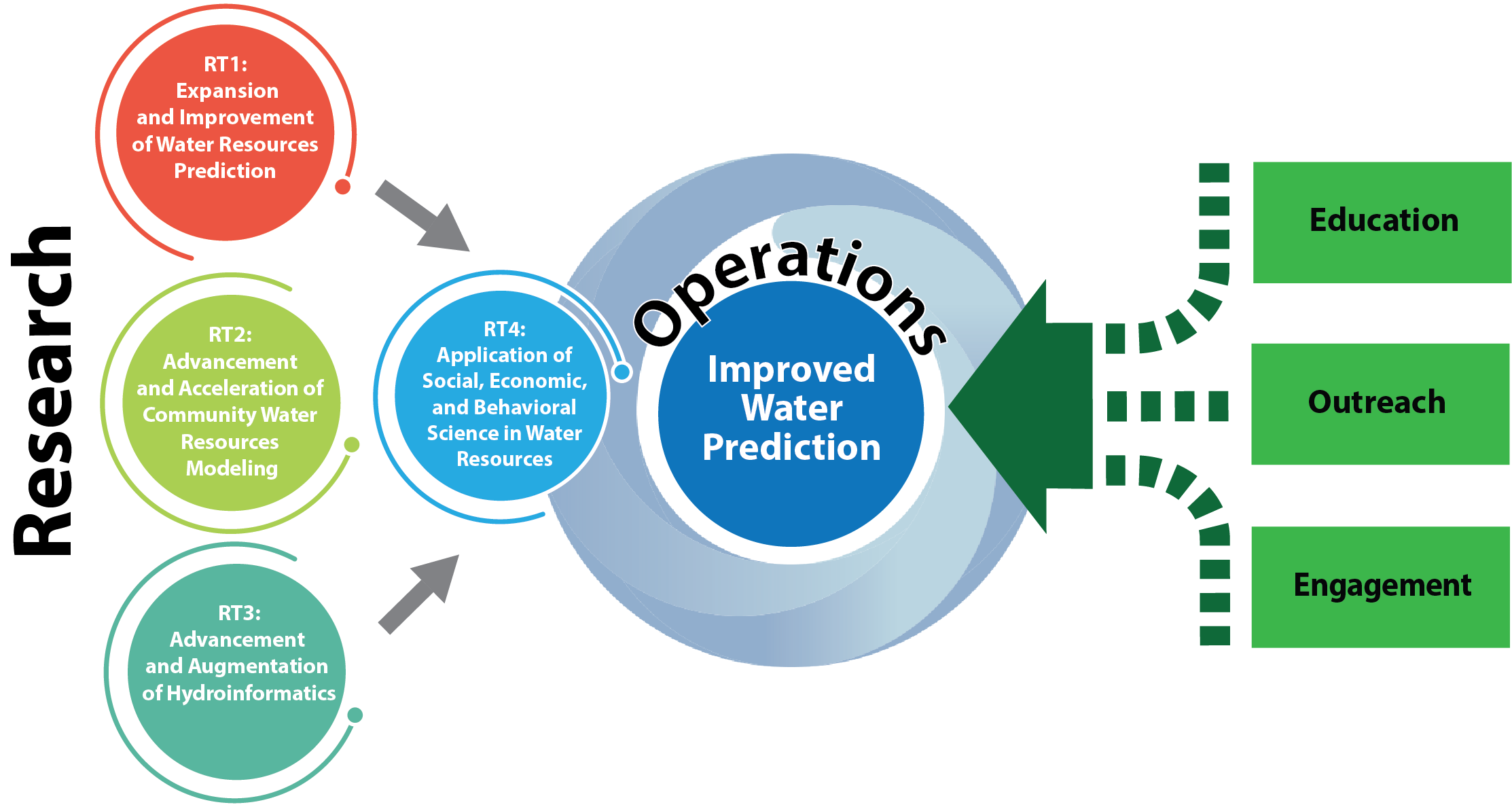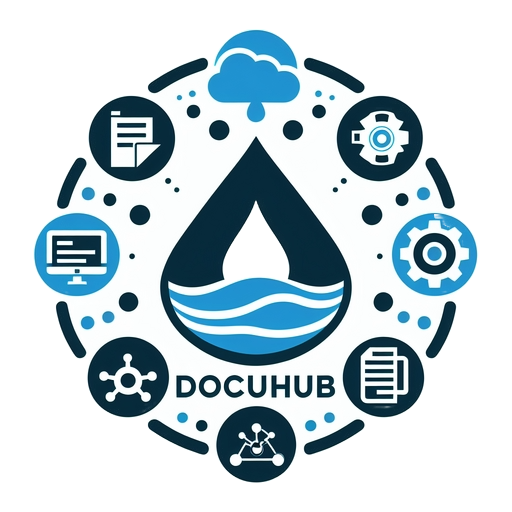CIROH is a unique Cooperative Institute because of its partnership with a NOAA operational line office – the National Weather Service. This is critical to realize the research to operations translation goal of CIROH. Research is organized into four research themes. Projects are aligned with a research theme or cross-cut multiple research themes. CIROH seeks to build collaborative teams across the research community. Research products are developed and disseminated following an open science philosophy.
Research Themes
- Improvement of Water Resources Prediction Systems. CIROH will improve geospatial intelligence, inputs, probabilistic forcings, data assimilation, operational workflows and tools, and uncertainty quantification extending water resources predictions capabilities and applications. CIROH’s major community contribution is a water prediction system testbed and model evaluation system.
- Advancement and Acceleration of Community Water Resources Modeling. CIROH will advance a state-of-the-art, community driven mechanistic hydrological model with hybrid integration of artificial intelligence and data-driven approaches with biophysical-hydrological-social processes coupled to advance the speed, accuracy, and resolution of prediction. CIROH’s major community contribution is the integration of research advances into the developmental version of the Next Generation Water Resources Modeling Framework.
- Advancement and Augmentation of Hydroinformatics. CIROH will promote FAIR data principles in its innovations in extreme data management, development of new informatics tools and community development platforms, creation of advanced user interfaces and experiences, and advancement of flood inundation mapping techniques.
- Application of Social, Economic, and Behavioral Science in Water Resources. CIROH will serve as an integrator of research-to-operations-to-research (R2O2R) interactions connecting researchers, operators, modelers, data scientists, social scientists, decision makers, and communication and policy experts in a cooperative hydrologic research and prediction community. National-scale coordination of social and behavioral science will uncover risk perceptions, user preferences, and forecast design needs for all types of communities in the United States.


